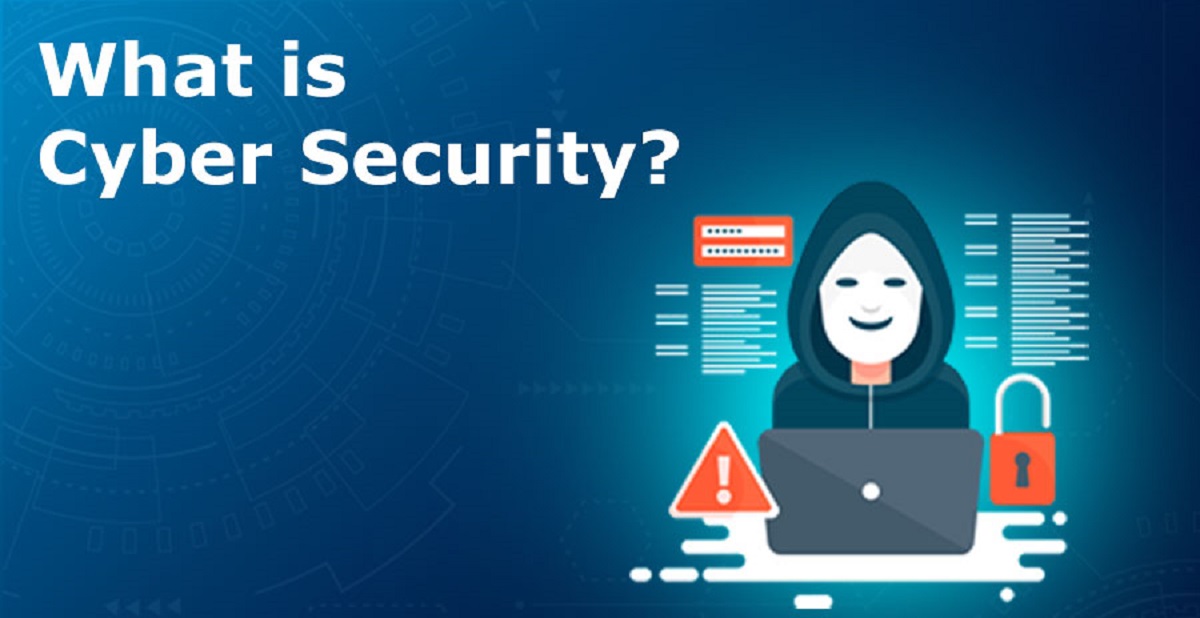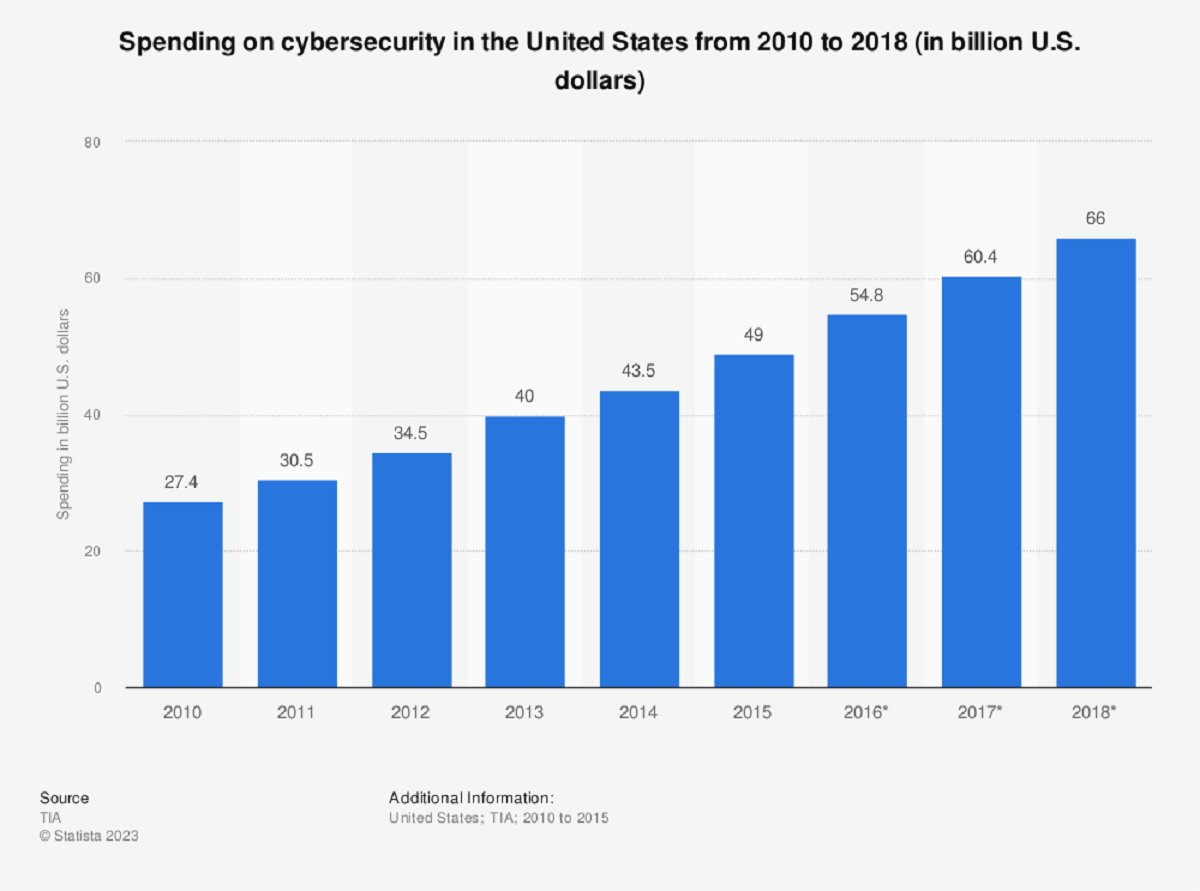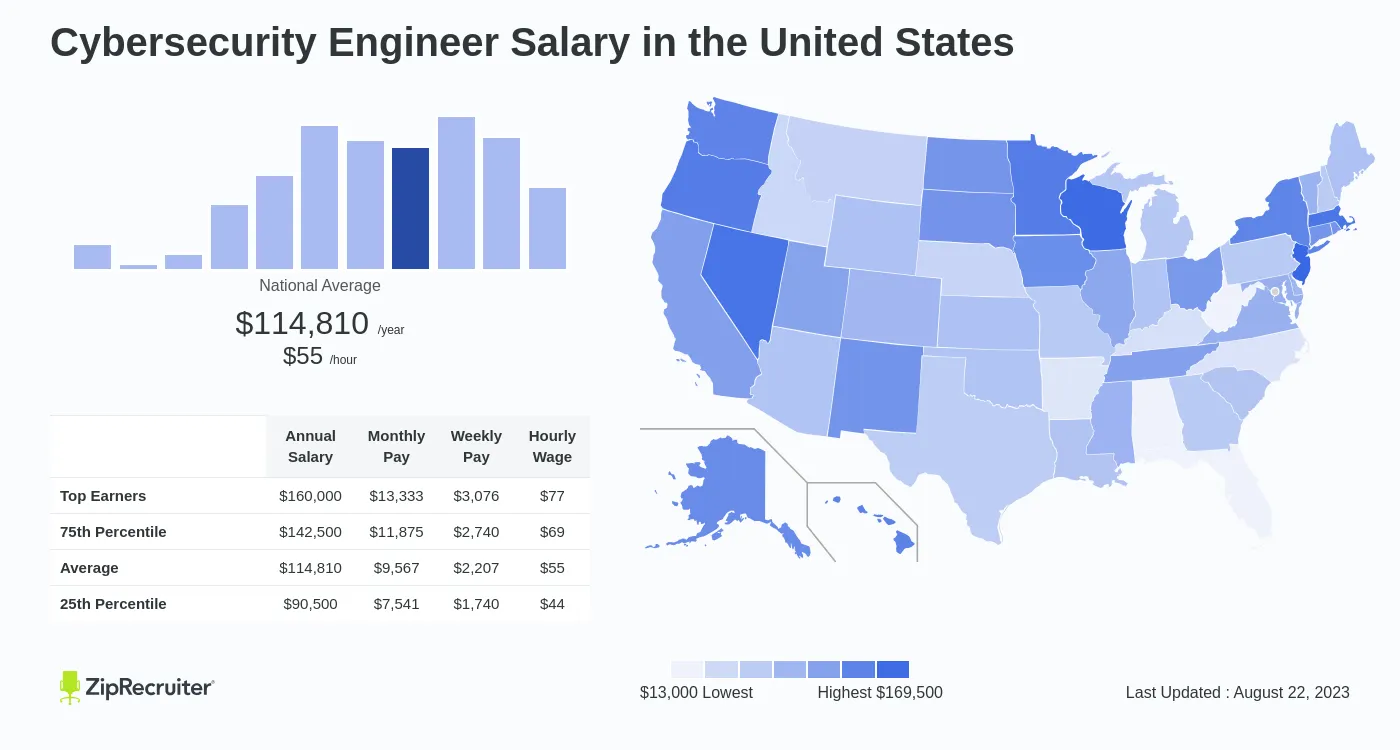Introduction
Welcome to the world of cybersecurity! In today’s digital age, where technology is an integral part of our daily lives, the importance of cybersecurity cannot be overstated. With the rapid increase in internet usage and the continuous advancements in technology, the threat landscape has become more complex, making it essential to protect our digital assets and personal information from cybercriminals.
Cybersecurity refers to the practice of safeguarding computers, servers, mobile devices, networks, and data from unauthorized access, theft, or damage. It involves implementing measures and protocols to prevent, detect, and respond to cybersecurity threats.
As technology continues to evolve, so do the threats that lurk in cyberspace. Cyberattacks can come in various forms, ranging from simple spam emails and phishing attempts to sophisticated malware and ransomware attacks. These attacks can lead to a range of negative consequences, including financial loss, privacy breaches, identity theft, and reputational damage. Therefore, it is crucial to understand the fundamental concepts of cybersecurity and adopt best practices to mitigate these risks.
In this article, we will explore the different types of cybersecurity threats, common cybersecurity attacks, and the importance of cybersecurity not only for individuals but also for businesses. We will also provide practical tips on how to protect yourself and your digital assets from cyber threats.
So, whether you’re a tech enthusiast, a business owner, or simply someone concerned about staying safe in the digital realm, this article will provide you with valuable insights and information to navigate the complex world of cybersecurity. Let’s dive in and discover the importance of protecting our digital lives!
What is Cybersecurity?
Cybersecurity is the practice of defending computers, servers, mobile devices, networks, and data from unauthorized access, theft, or damage. In simple terms, it involves protecting our digital assets from cyber threats and ensuring the confidentiality, integrity, and availability of information.
At its core, cybersecurity is about safeguarding against malicious activities in the digital world. It encompasses a wide range of technologies, processes, and practices designed to protect computer systems and networks from unauthorized access, data breaches, and other cyberattacks.
One of the key goals of cybersecurity is to maintain the confidentiality of sensitive information. This entails preventing unauthorized individuals or entities from accessing or viewing personal, financial, or proprietary data. By implementing robust security measures, such as encryption and access controls, cybersecurity professionals strive to keep confidential information safe from prying eyes.
Another critical aspect of cybersecurity is ensuring the integrity of data. This means protecting information from being tampered with or modified by unauthorized parties. In today’s interconnected world, where data is constantly being transferred and shared, maintaining trust in the accuracy and reliability of data is crucial.
Availability is another essential pillar of cybersecurity. It involves ensuring that systems and data are accessible and usable by authorized individuals whenever needed. Cybersecurity measures help prevent disruptions caused by cyberattacks, system failures, or other technical issues that could compromise the availability of services and data.
Furthermore, cybersecurity is not only about protecting specific devices or networks but also about securing the entire digital ecosystem. It includes safeguarding cloud-based systems, internet-connected devices (IoT), and even the software and applications we use. As technology evolves, the scope of cybersecurity expands to meet new challenges and threats.
Overall, cybersecurity plays a critical role in our increasingly connected world. It helps protect our personal information, financial data, and intellectual property from falling into the wrong hands. By implementing effective cybersecurity measures, individuals and organizations can mitigate the risks and potential damages associated with cyber threats.
Why is Cybersecurity Important?
In today’s digital age, where technology is deeply ingrained in our daily lives, cybersecurity is more important than ever before. Here are some key reasons why cybersecurity is of utmost importance:
- Protection of Personal Information: With the increasing prevalence of online transactions and the storage of personal data in digital form, cybersecurity is essential to safeguard our personal information. This includes sensitive data such as social security numbers, bank account details, and medical records. By implementing robust cybersecurity measures, we can reduce the risk of identity theft, fraud, and other cybercrimes.
- Preventing Financial Loss: Cyberattacks can result in significant financial losses for individuals and organizations. Hackers can gain unauthorized access to financial accounts, steal credit card information, or conduct fraudulent transactions. By prioritizing cybersecurity, we can protect ourselves and our businesses from financial harm.
- Maintaining Confidentiality: Confidentiality is crucial in many aspects of our lives, whether it’s personal, professional, or governmental. Cybersecurity helps ensure that sensitive information remains confidential and accessible only to authorized individuals.
- Preserving Trust and Reputation: A successful cyberattack can have severe consequences for an individual or organization’s reputation. It can erode customer trust, damage brand image, and result in potential legal issues. By investing in robust cybersecurity practices, we can proactively protect our reputation and maintain the trust of our stakeholders.
- Protecting Intellectual Property: Intellectual property, such as proprietary software, trade secrets, research findings, or creative content, is a valuable asset for many organizations. Cybersecurity plays a vital role in protecting intellectual property from theft, unauthorized distribution, or malicious alteration.
- Safeguarding Critical Infrastructure: The interconnected nature of technology means that critical infrastructure, such as power grids, transportation systems, and healthcare facilities, is vulnerable to cyber threats. A cyberattack on these systems can have severe consequences on public safety and the economy. By prioritizing cybersecurity, we can ensure the resilience and continuity of essential services.
- Promoting National Security: In today’s interconnected world, cybersecurity is crucial for maintaining national security. Protecting government systems, military networks, and critical information infrastructure is essential in defending against cyber threats posed by nation-states, terrorists, and other malicious actors.
Given the significant impact that a cyber incident can have on individuals, businesses, and society as a whole, investing in robust cybersecurity measures is both necessary and prudent. By staying vigilant and adopting best practices, we can collectively mitigate the risks posed by cyber threats and enjoy the benefits of a secure digital environment.
Types of Cybersecurity Threats
The cybersecurity landscape is constantly evolving, with cybercriminals using various techniques and tactics to exploit vulnerabilities. Understanding the different types of cybersecurity threats is essential for implementing effective protection measures. Here are some common types of cybersecurity threats:
- Malware: Malware refers to malicious software designed to disrupt, damage, or gain unauthorized access to computer systems or networks. This includes viruses, worms, trojans, ransomware, and spyware. Malware can be distributed through infected email attachments, malicious websites, or even removable storage devices.
- Phishing: Phishing is a type of cyberattack where attackers impersonate legitimate entities, such as banks or online platforms, to trick individuals into providing sensitive information. These attacks typically involve fraudulent emails, text messages, or phone calls, and often aim to steal login credentials, financial data, or personal information.
- Denial of Service (DoS) Attacks: DoS attacks are designed to overwhelm a system or network with excessively high traffic, rendering it inaccessible or significantly slowing it down. These attacks aim to disrupt the availability of a service, often causing inconvenience or financial loss. Distributed DoS (DDoS) attacks involve multiple compromised systems attacking the target simultaneously.
- Social Engineering: Social engineering involves manipulating individuals to disclose sensitive information or perform certain actions that aid in a cyberattack. This can include techniques such as pretexting, baiting, or phishing. Attackers exploit human vulnerabilities and rely on deception and manipulation to gain unauthorized access to systems or networks.
- Man-in-the-Middle (MitM) Attacks: In a MitM attack, an attacker intercepts and alters communications between two parties without their knowledge. This allows the attacker to eavesdrop on sensitive information, modify message contents, or impersonate one of the parties. MitM attacks can occur in various scenarios, including public Wi-Fi networks or compromised routers.
- Insider Threats: Insider threats refer to malicious actions carried out by individuals within an organization who have authorized access to systems or information. This can include employees, contractors, or vendors with privileges to sensitive data. Insider threats can result in data breaches, intellectual property theft, or sabotage.
- Advanced Persistent Threats (APTs): APTs are highly sophisticated and targeted attacks aimed at specific organizations or individuals. These attacks involve an advanced level of persistent and stealthy techniques to gain long-term access to systems, allowing attackers to gather sensitive information and execute their objectives over an extended period.
- Zero-day Exploits: Zero-day exploits are vulnerabilities or weaknesses in software or applications that are unknown to the software developers or vendors. Attackers exploit these vulnerabilities before a patch is released, giving them a window of opportunity to carry out attacks. Zero-day exploits can be highly valuable in targeted attacks.
These are just a few examples of cybersecurity threats; the list continues to expand as cybercriminals develop new techniques and exploit emerging technologies. By staying informed about the ever-changing threat landscape, individuals and organizations can take proactive measures to protect themselves against these cybersecurity risks.
Common Cybersecurity Attacks
The world of cybersecurity is constantly evolving, with cybercriminals employing a wide range of tactics to exploit vulnerabilities and compromise security. Understanding the most common types of cybersecurity attacks is essential for recognizing potential threats and taking proactive measures to protect ourselves. Here are some prevalent cybersecurity attacks:
- Phishing: Phishing attacks involve sending fraudulent emails or messages that appear to be from trusted sources. These messages often trick individuals into revealing sensitive information, such as login credentials or financial details. Phishing attacks can also direct users to malicious websites that appear legitimate, aiming to steal personal information or install malware.
- Ransomware: Ransomware is a type of malware that encrypts files or locks computer systems, rendering them inaccessible until a ransom is paid. Ransomware attacks can have devastating consequences, causing financial loss and disruption of business operations. Attackers often demand payment in cryptocurrencies, making it difficult to track and trace the transactions.
- Denial of Service (DoS) Attacks: DoS attacks aim to overwhelm a system or network, making it unavailable to users. Attackers flood the targeted system with excessive traffic, causing it to crash or significantly slow down. DDoS attacks, which involve multiple distributed sources, are particularly challenging to mitigate and can result in significant downtime and financial losses.
- Man-in-the-Middle (MitM) Attacks: MitM attacks involve intercepting and altering communications between two parties without their knowledge. Attackers position themselves between the sender and recipient, enabling them to eavesdrop on sensitive information, modify message contents, or even impersonate one of the parties. These attacks commonly occur in public Wi-Fi networks or compromised routers.
- SQL Injection: SQL injection attacks exploit vulnerabilities in web applications that fail to properly validate user input. Attackers use malicious SQL statements to manipulate a database, gain unauthorized access, or retrieve sensitive information. SQL injection attacks can lead to data breaches or the compromise of an entire system.
- Malware: Malware encompasses various types of malicious software, including viruses, worms, trojans, and spyware. Malware can be delivered through infected email attachments, malicious websites, or compromised software downloads. Once installed, malware can wreak havoc on a system, steal sensitive information, or give attackers unauthorized access.
- Social Engineering: Social engineering attacks exploit human psychology to deceive individuals and manipulate them into divulging sensitive information or performing certain actions. Examples include impersonation, pretexting, or baiting. Social engineering attacks often rely on human trust and can be difficult to detect.
- Zero-day Exploits: Zero-day exploits target software vulnerabilities that are unknown to the software vendor or developers. Attackers take advantage of these vulnerabilities before patches or updates are released, giving them a head start in compromising systems. Zero-day exploits can be highly valuable and are often used in targeted attacks.
These are just a few examples of the common cybersecurity attacks that individuals and organizations face. Staying informed about the latest attack techniques and implementing strong security measures can help mitigate the risks associated with these threats. It is crucial to remain vigilant and adopt best practices to protect ourselves and our digital infrastructure from cybercriminals.
How to Protect Yourself from Cybersecurity Threats
In an ever-connected digital world, protecting yourself from cybersecurity threats is crucial to safeguard your personal information, finances, and online identity. While cybercriminals continue to develop new attack methods, there are proactive steps you can take to enhance your cybersecurity defenses. Here are some essential tips to protect yourself from cybersecurity threats:
- Use Strong, Unique Passwords: Create strong and unique passwords for each of your online accounts. Include a combination of letters, numbers, and special characters. Consider using a password manager to securely store and manage your passwords.
- Enable Multi-Factor Authentication (MFA): Enable MFA whenever possible, especially for important accounts such as your email, banking, and social media. MFA adds an extra layer of security by requiring a second form of verification, such as a fingerprint scan or a one-time password.
- Keep Software and Devices Updated: Regularly update your operating system, software applications, and antivirus programs to ensure you have the latest security patches. Enable automatic updates whenever possible to stay protected against known vulnerabilities.
- Be Cautious of Suspicious Emails and Links: Exercise caution when opening email attachments or clicking on links, especially if they come from unknown or suspicious sources. Be wary of phishing attempts and carefully review the sender’s email address and message content for any signs of deception.
- Be Mindful of Public Wi-Fi Networks: Avoid accessing sensitive information or logging into accounts while connected to public Wi-Fi networks. If you must use public Wi-Fi, use a virtual private network (VPN) to encrypt your internet traffic and protect your data from prying eyes.
- Regularly Back Up Your Data: Regularly back up your important files and data to an external hard drive, cloud storage, or another secure location. In the event of a ransomware attack or hardware failure, you can restore your data without paying a ransom or losing valuable information.
- Stay Educated about Current Threats: Stay informed about the latest cybersecurity threats and trends. Follow trusted sources for updates on emerging threats, security best practices, and new technologies that can help enhance your cybersecurity defenses.
- Be Wary of Sharing Personal Information: Be cautious when sharing your personal information online or over the phone. Avoid sharing sensitive information such as your social security number, bank account details, or passwords unless necessary and when you trust the source.
- Use Reliable Security Software: Install reputable antivirus and anti-malware software on your devices. Keep these programs up to date and perform regular scans to detect and remove any malicious software that may compromise your system.
- Practice Safe Online Shopping and Banking: When shopping or banking online, ensure that the website is secure by looking for “https://” and a padlock symbol in the browser’s address bar. Avoid making financial transactions or entering personal information on unsecured or suspicious websites.
By following these cybersecurity best practices, you can significantly reduce the risk of falling victim to cyber threats. Remember, cybersecurity is a continuous effort, and staying vigilant and informed is key to protecting yourself and your digital assets in the ever-evolving digital landscape.
Importance of Cybersecurity in Businesses
In today’s interconnected world, cybersecurity is of paramount importance for businesses of all sizes. As technology continues to advance and cyber threats become more sophisticated, organizations must recognize the significance of investing in robust cybersecurity measures. Here are some key reasons why cybersecurity is essential for businesses:
- Protection of Sensitive Data: Businesses collect and store vast amounts of sensitive data, including customer information, intellectual property, and financial records. Cybersecurity measures help prevent unauthorized access, data breaches, and theft of this valuable information. Failure to protect sensitive data can lead to severe financial, legal, and reputational consequences.
- Mitigation of Financial Loss: Cyberattacks can have a devastating impact on a company’s finances. The costs associated with remediation, customer notification, legal fees, and potential regulatory fines can be crippling. Implementing robust cybersecurity measures can help mitigate the financial risks associated with cyber incidents.
- Maintaining Business Continuity: A successful cyberattack can disrupt business operations, leading to significant downtime, loss of productivity, and revenue loss. By investing in cybersecurity, businesses can enhance their resilience and minimize the impact of cyber incidents, ensuring continuity of operations even in the face of potential attacks.
- Preserving Customer Trust and Reputation: Customer trust is a vital asset for any business. A data breach or security incident can erode customer confidence, damaging the brand’s reputation and leading to a loss of customers. By prioritizing cybersecurity, businesses can demonstrate their commitment to protecting customer data, preserving trust, and maintaining a positive reputation.
- Compliance with Regulations: Many industries have specific cybersecurity regulations and compliance requirements. By implementing strong cybersecurity measures, businesses can ensure they meet the necessary regulatory standards, avoiding penalties and legal ramifications.
- Protection from Intellectual Property Theft: Intellectual property (IP) is a valuable asset for many businesses. Cybersecurity plays a crucial role in safeguarding IP from theft, ensuring that innovative ideas, trade secrets, and proprietary information are adequately protected from competitors and cybercriminals.
- Defense against Competitive Advantage Loss: Cybersecurity breaches can result in the loss of competitive advantage. Unauthorized access to business strategies, product development plans, or customer information can give competitors an unfair advantage. Protecting valuable business assets through cybersecurity measures helps maintain a strong market position.
- Minimizing Disruption in the Supply Chain: In today’s interconnected business landscape, supply chains often involve multiple partners and vendors. A cybersecurity incident affecting any participant in the supply chain can have far-reaching consequences. Implementing cybersecurity practices throughout the supply chain helps minimize the risk of disruptions and bottlenecks.
- Enhancing Employee Awareness and Education: Cybersecurity measures can also benefit businesses by fostering a culture of cybersecurity awareness and education among employees. Training programs and awareness campaigns can empower employees to recognize and report potential threats, reducing the likelihood of successful attacks.
Overall, cybersecurity is a fundamental part of running a successful business in today’s digital age. By investing in robust cybersecurity measures, businesses can protect their sensitive data, maintain customer trust, and ensure the long-term success and resilience of their operations.
Cybersecurity Best Practices for Businesses
Implementing effective cybersecurity measures is crucial for businesses to protect their data, systems, and reputation from cyber threats. By adopting cybersecurity best practices, organizations can significantly reduce the risk of cyberattacks and minimize potential damage. Here are some essential cybersecurity best practices for businesses:
- Develop a Comprehensive Cybersecurity Policy: Establish a clear and comprehensive cybersecurity policy that outlines rules, guidelines, and procedures for employees to follow. This policy should cover areas such as password management, data handling, access controls, and incident response protocols.
- Regularly Educate and Train Employees: Provide regular cybersecurity awareness training to all employees. Educate them about the importance of strong passwords, identifying phishing attempts, and safe online practices. Encourage employees to report any suspicious activities or incidents promptly.
- Implement Strong Password Policies: Enforce strong password policies, requiring complex and unique passwords that are regularly changed. Implement multi-factor authentication (MFA) for access to critical systems and data, adding an extra layer of security.
- Keep Software and Systems Up to Date: Regularly update and patch all software, applications, and operating systems to protect against known vulnerabilities. Enable automatic updates whenever possible to ensure timely installation of security patches.
- Secure Network and Wi-Fi: Use firewalls, network segmentation, and secure Wi-Fi protocols to protect your internal network from unauthorized access. Regularly monitor network traffic and use intrusion detection and prevention systems to detect and respond to potential threats.
- Encrypt Sensitive Data: Encrypt sensitive data at rest and in transit to ensure that even if it is compromised, the information remains unreadable and unusable. This includes encrypting files on storage devices, using secure communication protocols, and implementing encryption measures for email communications.
- Backup Data Regularly: Establish a regular data backup routine to ensure that critical business data is protected. Store backups on separate systems or off-site locations to ensure accessibility in case of a cybersecurity incident or hardware failure.
- Implement Least Privilege Access: Grant employees access privileges on a need-to-know basis. Limit user permissions to the minimum required for their roles. Regularly review and revoke access for employees who no longer require it, such as those who have changed roles or left the organization.
- Conduct Regular Vulnerability Assessments: Perform regular vulnerability assessments and penetration testing to identify weaknesses in your systems and applications. Address any vulnerabilities promptly and ensure that security measures are continuously updated to reflect emerging threats.
- Establish an Incident Response Plan: Develop and test an incident response plan that outlines the steps to be followed in the event of a cybersecurity incident. Assign roles and responsibilities to specific individuals to ensure a swift and coordinated response.
Implementing these cybersecurity best practices can help businesses strengthen their security posture and protect their valuable assets from cyber threats. By prioritizing cybersecurity and maintaining a proactive approach, organizations can enhance their resilience and minimize the potential impact of cyber incidents.
Cybersecurity Careers and Education
The field of cybersecurity offers diverse career opportunities and continues to grow in importance as organizations strive to protect themselves from cyber threats. A career in cybersecurity can be rewarding and challenging, with a wide range of roles requiring specialized skills and knowledge. Here are some key aspects of cybersecurity careers and education:
Cybersecurity Roles: The cybersecurity field offers various roles, including:
- Cybersecurity Analyst: Conducts threat assessments, monitors systems for vulnerabilities, and implements security measures.
- Security Engineer: Designs, builds, and maintains secure systems and networks, and implements security controls.
- Incident Responder: Investigates and responds to cybersecurity incidents, including analyzing and mitigating threats.
- Security Architect: Designs and develops secure solutions, architectures, and frameworks for organizations.
- Penetration Tester: Identifies vulnerabilities in systems and networks by conducting controlled attacks to evaluate security.
To pursue a career in cybersecurity, individuals should consider obtaining relevant education, certifications, and experience:
Educational Programs: Many universities and colleges offer cybersecurity programs at the undergraduate and graduate levels. These programs cover topics such as network security, cryptography, ethical hacking, risk management, and cybersecurity policy.
Certifications: Obtaining industry-recognized certifications can enhance career prospects and demonstrate expertise in specific areas of cybersecurity. Common certifications include Certified Information Systems Security Professional (CISSP), Certified Ethical Hacker (CEH), CompTIA Security+, and Certified Information Security Manager (CISM).
Continuous Learning: Cybersecurity is an ever-evolving field, and professionals must stay updated with the latest trends, threats, and technologies. Continuous learning through professional development opportunities, attending conferences, and engaging in online forums or communities is crucial.
Hands-on Experience: Practical experience is essential in cybersecurity. Internships, entry-level positions, or participation in cybersecurity competitions can provide valuable hands-on experience and help develop essential skills.
Cybersecurity professionals should continuously develop their technical skills and possess traits such as problem-solving abilities, attention to detail, strong analytical skills, and a commitment to lifelong learning. Additionally, professionals must adhere to ethical standards and follow legal and regulatory requirements.
Organizations and government agencies also play a vital role in promoting cybersecurity education. They offer training programs, scholarships, and internships to nurture the next generation of cybersecurity professionals.
Overall, a career in cybersecurity offers exciting opportunities and challenges as organizations strive to protect their digital assets. By pursuing the right education, certifications, and hands-on experiences, individuals can develop the skills necessary to make a significant impact in the field of cybersecurity.
Conclusion
Cybersecurity is a critical aspect of our modern digital lives. As technology continues to advance, so do the threats posed by cybercriminals. It is essential for both individuals and businesses to prioritize cybersecurity to protect sensitive data, prevent financial loss, maintain trust, and ensure the continuity of operations.
For individuals, adopting cybersecurity best practices, such as using strong passwords, being cautious of suspicious emails and links, and regularly updating software, can greatly reduce the risk of falling victim to cyber threats. Ongoing education and staying informed about the latest threats are also crucial in ensuring personal privacy and safety in the digital world.
In the business world, cybersecurity is a vital component of protecting valuable assets, maintaining customer trust, and preserving reputation. Investing in robust cybersecurity measures, implementing comprehensive policies, and fostering a culture of security awareness among employees are all critical steps towards creating a strong cybersecurity posture.
Cybersecurity careers offer exciting opportunities for those interested in protecting digital systems and networks from malicious actors. With the right education, certifications, and experience, individuals can build successful careers in roles such as cybersecurity analysts, security engineers, or incident responders. Continuous learning and staying updated with the evolving cybersecurity landscape are essential for professionals in this field.
As technology continues to advance and cyber threats become more sophisticated, the importance of cybersecurity will only continue to grow. By understanding the risks, adopting best practices, and remaining vigilant, we can all contribute to a safer digital world.

























